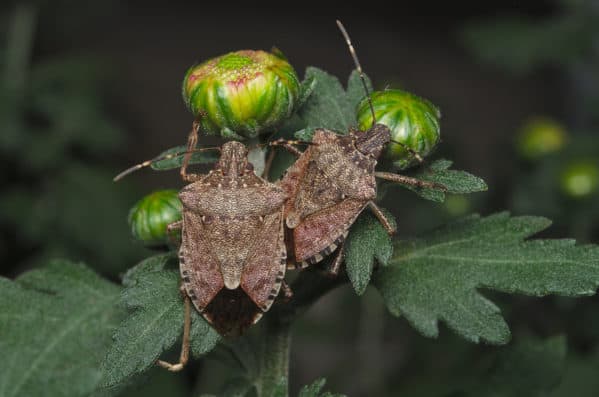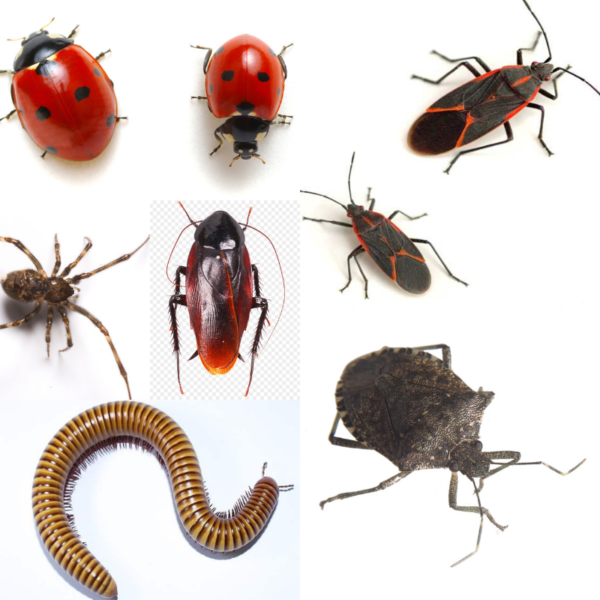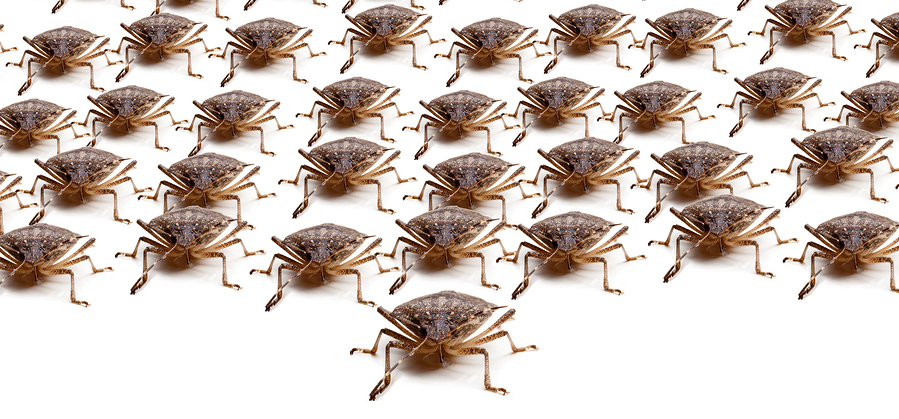READY TO GET STARTED?
REQUEST A FREE ESTIMATE
Fill out the form below or call (888) 466-7849 for a free, no-obligation estimate.

As the weather warms up overwintering pests will begin to wake up and make their way outdoors. One of these is the brown marmorated stinkbug. While these household pests don’t sting, bite, or carry any diseases, they can become a nuisance when they get inside your home. In fact, once you see stinkbugs inside, it’s usually too late to do anything to keep them out.
The brown marmorated stinkbug is native to Asia but was later introduced in the United States. They prefer moist, temperate climates like those of the Eastern US and the Pacific Northwest. Stinkbugs feed on soybeans, corn, fruit, vegetables, and ornamental plants that grow close to homes. Stinkbugs spend the spring and summer seasons outdoors then will seek shelter from the winter elements indoors – often entering your home through cracks, crevices, gaps or holes in your foundation, through chimneys, air conditioning vents, or underneath siding. The prefer homes with lots of trees around and will gravitate to the upper floors of a home.
During the winter months, stinkbugs go into a phase known as diapause, which is similar to hibernation, where the bugs go inactive during the cold weather. When the stinkbugs find a spot to overwinter, they release a pheromone that attracts other stinkbugs to their location. While they typically stay dormant until spring, unusually warm spells during the winter can bring them out full force.
If you encounter stinkbugs in your home, the best way to get rid of them is to vacuum them up and immediately dispose of the bag. When stinkbugs are threatened, disturbed, or squashed, they emit a smell that has been described as anything from cilantro to rotting almonds to spoiled fruit.
The best way to control stinkbugs is to prevent them from getting into your home in the first place. Here are 9 prevention tips for keeping stinkbugs out.
10 Common Myths About Pest Control
Is Orange Oil Effective As A Treatment For Termites?
How Do You Get Your Lawn Ready For Spring?

Ladybugs are said to be a sign of good luck, but when you start to find them crawling all over the inside of your home, you don’t feel as lucky.
Ladybugs, or Asian Lady Beetles, are just one of the pests that will try to use your home for overwintering. Overwintering is the process of insects passing the winter season, and your home poses as the ideal habitat for this practice.
Temperatures drop, and pests such as house spiders, boxelder bugs, ladybugs, millipedes, stink bugs, and even smokybrown roaches, will make their way in your home to hide during the cold weather. Come spring, these pests will emerge in and around your home in MASSIVE numbers.
The best preventive measures to stop overwintering pests, luckily enough, are DIY!
If you feel you have an issue with any of these overwintering pests, call you licensed pest professional to schedule an inspection right away.

Stink bugs, often called kudzu bugs, are classified as occasional invaders and usually make an appearance in the Spring in Georgia. They look similar to brown lady bugs, feed on plants (like kudzu), and give off an unpleasant smell when threatened. Because of their small size, stink bugs can fit in the smallest cracks and crevices, making their way into your home in search of water and shelter. Most likely, at this time of year, they’re looking for somewhere warm to escape the cold winter temperatures. Once inside, your attic or other infrequently used spaces for storage will likely be their preferred residence. If not controlled and eliminated, stink bugs will infest the area and remain inside your home until Spring, when they will start moving outside in search of food.
Because of their strong smell, it’s recommended to call a pest control company that specializes in stink bug control to get rid of them. Temporarily, you can dispose of them by using a vacuum but this can cause a lingering smell. If you choose to do this, they should be emptied outside of your home immediately.
Prevention is key with stink bugs. Prior to seasonal changes in weather, make sure your home is airtight. Cracks, crevices, and gaps around doors, window, and pipes should be sealed and broken screens or attic/crawl space vents repaired. Once inside, it can be extremely difficult to control them.
Brown marmorated “stink bugs” are an invasive species from Asia that arrived in Pennsylvania in 1996 and can now be found from South Carolina to New Hampshire and west to Indiana, as well as in California, Oregon, Washington, Arizona, New Mexico and Texas.
Stink bugs get their name from the odor they emit as a defense against predators, including birds, spiders and assassin bugs. When handled or disturbed, stink bugs are able to secrete a bad-smelling fluid from pores on the sides of their bodies.
Adult stink bugs enter homes and other structures in the late fall to seek shelter from the winter weather, often from mid-September through mid-October. They reemerge from overwintering sites in early spring and try to exit, but sometimes enter living spaces instead.
Stink bugs have the potential to spread throughout the country, which could be increasingly harmful to the agricultural industry, as they destroy crops.
Stink bugs are not known to bite humans, but their tendency to invade homes in high numbers makes them a difficult pest to control once inside.
Source: Professional Pest Management Alliance
Photo Credit – Steven Jacobs Penn State College of Agricultural Sciences
Brief description:
The stink bug gets its name from its ability to release an odor when they are disturbed or crushed. Stink bugs have a triangular or shield shape.
Habits:
Different species:
Threats:
Prevention:
Other pests to look out for: